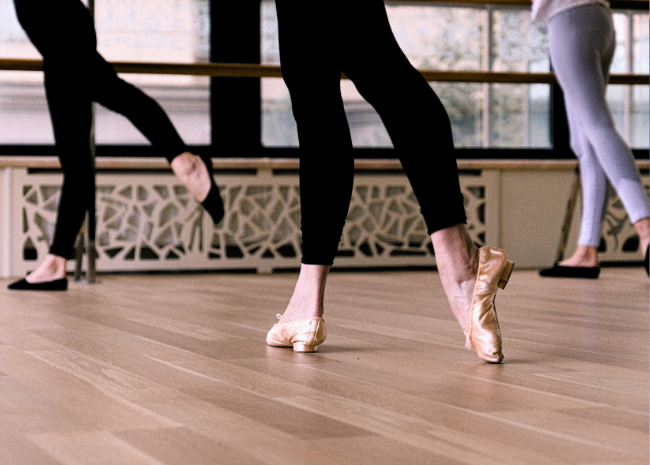
Get Back on Your Toes After a Dancer’s Fracture
Understanding Fifth Metatarsal Fractures
Rotating or twisting an ankle or foot, or incurring a crush injury by dropping a heavy object on the foot, may cause a fracture of the fifth metatarsal, a bone at the base of the small toe.
This injury, also known as dancer’s fracture, is similar to a sprained ankle in that it can make walking difficult, cause some localized pain and swelling, and the skin can turn black and blue.
What is A Dancers Fracture?
The good news is that with proper treatment and therapy, an individual with a dancer’s fracture can start bearing weight on the injured foot fairly quickly.
Signs To Watch For:
- Difficulty walking
- Localized pain and swelling
- Black and blue discoloration of the skin
Treatment and Recovery
Treatment usually does not involve surgery, particularly if you can move the injured foot to the outside.
Treatment for a Dancer’s Fracture Includes:
- Rest and Immobilization
- Walking Boot
- Protective Walking Shoe
- Crutches
- Exercises
- Physical Therapy
The body has an impressive ability to heal fractures with appropriate rest and care; however, when you first suffer a dancer’s fracture, it’s essential to understand the steps involved in your recovery journey.
We will be diving into each treatment & recovery stage below.
First, How Long Does A Dancers Fracture Take To Heal?
Recovery can be frustrating at times. In some instances, patients continue to feel symptoms more than eight weeks after their injury, but those occasions are rare.
It often takes 12 or more weeks for a full recovery to occur for most patients.
Recovery Timeline
- Weeks 1-3: Limited mobility, use of ice packs, elevation, and rest
- Weeks 4-6: Transition to a walking boot, start gentle movements
- Weeks 7-12: Move to a protective walking shoe, gradually increase activity level
Initial Phase: Rest and Immobilization
For the first few weeks, your mobility will be limited. This is a crucial phase where your body begins the healing process, and any unnecessary movement could disrupt this.
Key steps include:
- Limiting weight-bearing activities
- Elevating the foot to reduce swelling
- Using ice packs to manage pain and inflammation
Transition Phase: Walking Boot
Once the swelling starts to subside, you will use a walking boot. The walking boot serves multiple purposes: it protects the injured area, stabilizes the foot, and allows you to move around without putting undue stress on the healing bone.
This phase requires patience as the boot can be cumbersome, but it’s a necessary part of the healing process.
Final Phase: Protective Walking Shoe
After six weeks, the bone may be healed to the point where you will be able to walk in a stiff-soled protective walking shoe with plenty of padding. This shoe provides a transition from the rigid boot to normal footwear.
The padding and stiff sole ensure that your foot is still protected while allowing a bit more freedom of movement.
While some people might start feeling better and walking with less pain in about six weeks, it’s important to follow through with all recommended treatments and exercises to ensure a full recovery.
Rehabilitation and Exercises
Dancer’s fracture can be treated with exercises, which strengthen and balance your muscles and help you gain the motion and strength necessary to bear weight and walk.
These exercises are essential to ensure that your foot regains its full functionality.
Key Exercises for Recovery
- Range of Motion Exercises: These exercises help maintain flexibility in your foot and ankle.
- Ankle circles
- Toe stretches
- Strengthening Exercises: Building strength in your foot and ankle muscles supports recovery.
- Towel scrunches
- Calf raises
- Balance Exercises: Improving balance helps prevent future injuries.
- Single-leg stands
- Balance board exercises
Specialized Care at The Jackson Clinics
Our physical therapists at The Jackson Clinics can develop a program that supports your safe and complete recovery, while pushing you enough to help you regain mobility.
Did you know you have Direct Access* to Physical Therapy? No referral, no problem!
The Jackson Clinics has several Physical Therapists experienced in treating these types of injuries. With our assistance, you can return to pain-free dancing, sports, or daily activities as soon as possible.
Check out our list of 18 locations throughout Northern Virginia to find one near you and get started today!

















